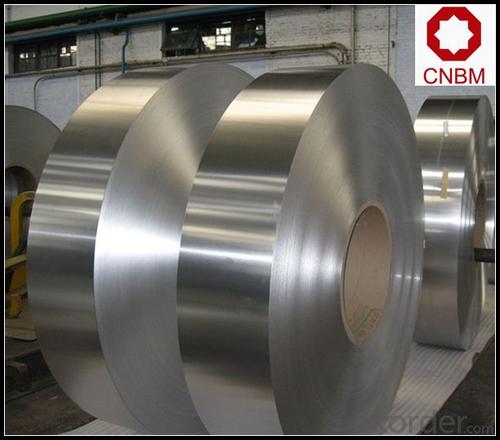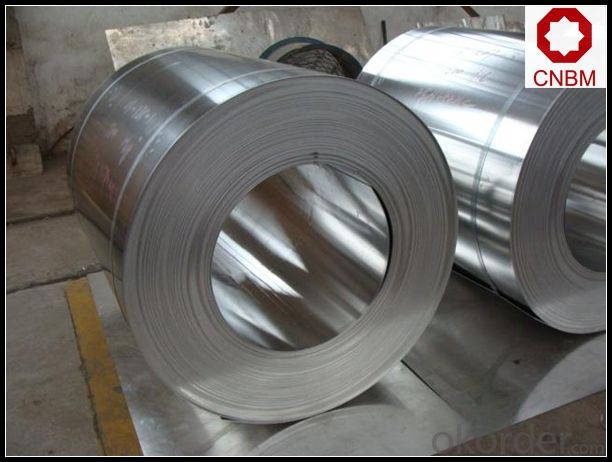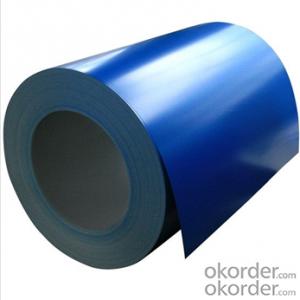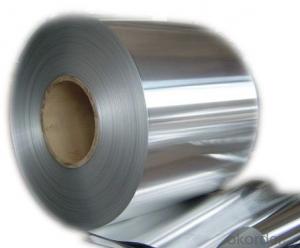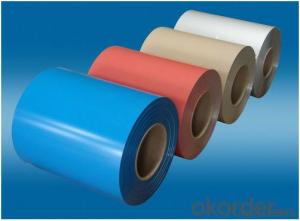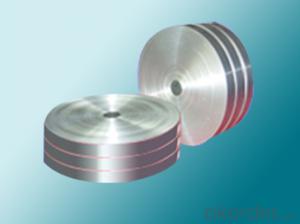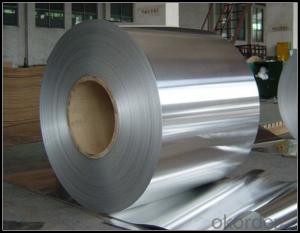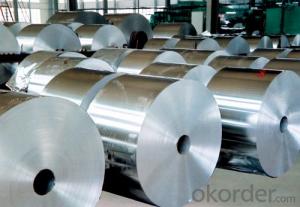0270a00983 Aluminum Coil - China Factory Supply Aluminum Coil Manufacturers
- Loading Port:
- Shanghai
- Payment Terms:
- TT OR LC
- Min Order Qty:
- 5 m.t.
- Supply Capability:
- 10000 m.t./month
OKorder Service Pledge
OKorder Financial Service
You Might Also Like
Specification
1. Specification of Aluminum Coil Manufacturers in China Factory Supply
1) Alloy | 1050, 1060,1100, 3003 3004 3105 3A21 5005 5052 etc |
2) Temper | O/H12/H14/H1/H18/H32/H34/H36/H38//H111/H112/H116/H321/T6/T651/T3/T351 etc |
3) Thickness | 0.1mm to 6mm |
4) Width | 20mm to 3300mm |
5) Coil weight | 100kgs to 6 tons depends on actual requirement |
6) Core material | Aluminum or paper |
7) Coil Inner diameter | 75mm, 150mm, 200mm, 300mm, 405mm, 505mm or as required |
8) Protective film can be added
2. Application of Aluminum Coil Manufacturers in China Factory Supply
(1).Interior: wall cladding, ceilings, bathrooms, kitchens and balconies, shutters, doors...
(2).Exterior: wall cladding, facades, roofing, canopies, tunnels,column covers , renovations...
(3).Advertisement: display platforms, signboards, fascia, shop fronts...
3. Feature of Aluminum Coil Manufacturers in China Factory Supply
*Such coil is specially designed to replace aluminum ingot, due to the high export tax of aluminum ingot, the coil has better price than ingot.
*This type of coil can fit customer's remelting furnace just like ingot, no need to make any change to the production line that was previously used for ingot. The standard coil size and weight is very suitable for the feed gate of furnace.
*This type of coil causes less material wastage than ingot when remelted.
*Our coil is made directly from ore, no need to go though the ingot making process, quality is much better than other suppliers who use ingot scrap to make coil.
Be free from Oil Stain, Dent, Inclusion, Scratches, Stain, Oxide Dicoloration, Breaks, Corrosion, Roll Marks, Dirt Streaks and other defect which will interfere with use
4. Certificate:
SGS and ROHS(if client request, paid by client), MTC(plant provided), Certificate of Origin(FORM A, FORM E, CO), Bureau Veritas and SGS (if client request, paid by client), CIQS certificate
5. Image of Aluminum Coil Manufacturers in China Factory Supply
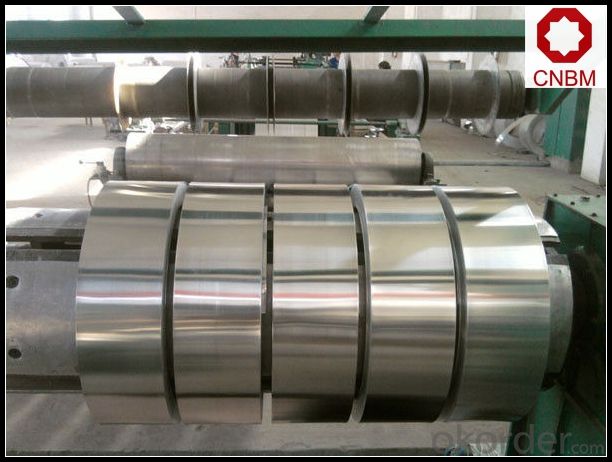
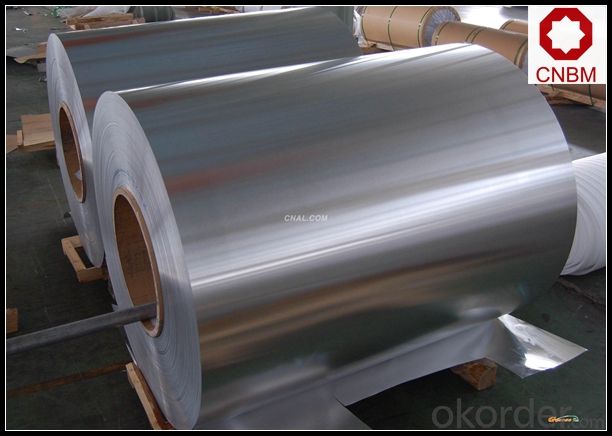
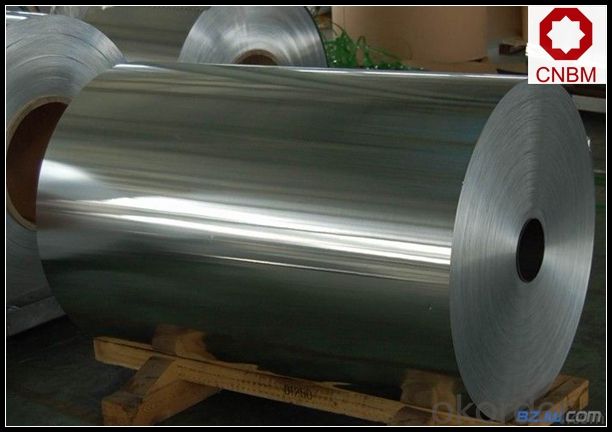
6. Package and shipping of Aluminum Coil Manufacturers in China Factory Supply
eye to wall
eye to the wall
with wood pallet (wooded case also available)
7. FAQ
1) What is the delivery time?
Dpends on actual order, around 20 to 35 days
2)What is the QC system:
We have QC staff of 20 persons and advanced equipment, each production is with MTC traced from Aluminum ingot lot.
3) What market do you mainly sell to?
Australia, America, Asia, Middle East, Western Europe, Africa etc
- Q: Are there any specific guidelines for handling and storing aluminum coils in warehouses?
- Specific guidelines exist for the handling and storage of aluminum coils in warehouses, with the aim of ensuring worker safety and maintaining coil integrity. Consider the following key points: 1. Equipment: When moving aluminum coils, it is crucial to utilize proper lifting equipment like cranes or forklifts with suitable attachments to prevent damage. Avoid dragging or dropping coils, as this may result in deformation or scratching. 2. Storage Location: Choose a well-ventilated, dry, and clean area for storing aluminum coils. The storage space should be away from direct sunlight, heat sources, and any chemicals that could react with aluminum. Maintaining consistent temperature and humidity levels is essential to prevent corrosion or other damage. 3. Stacking: Stack aluminum coils using appropriate dunnage material, such as wooden blocks or rubber mats, to prevent direct contact. This helps prevent scratches, dents, or other physical damage. Additionally, avoid excessive stacking height to prevent coil deformation or collapse. 4. Handling Precautions: Always wear proper personal protective equipment (PPE), including gloves and safety shoes, when handling aluminum coils. This safeguards against potential injuries from sharp edges or falling objects. 5. Labeling: Clearly label each coil with essential information such as weight, dimensions, alloy type, and any special handling instructions. This ensures proper identification and helps prevent mishandling or confusion. 6. Regular Inspections: Regularly inspect stored aluminum coils for signs of damage or corrosion. If any issues are identified, take immediate action to prevent further damage. 7. Security: Implement security measures to prevent unauthorized access to the storage area, protecting the coils from theft or vandalism. It is important to note that specific guidelines may vary based on the type and size of aluminum coils, as well as local regulations and industry standards. Consulting the manufacturer's instructions or seeking professional advice is recommended to ensure compliance with the appropriate handling and storage guidelines.
- Q: What are the common installation methods for aluminum coils?
- Aluminum coils can be installed using various methods, each with its own advantages and applications. 1. Direct Attachment: To install aluminum coils, one can directly attach them to the desired surface, like a wall or roof. The specific method of attachment, whether it's screws, nails, or adhesive, depends on the application and surface condition. This method is commonly used for exterior applications such as siding and roofing. 2. Coil Stock Installation: Another method involves cutting the aluminum coil into smaller pieces known as coil stock, which are then installed individually. This method is ideal for projects that require a customized fit, such as wrapping window frames or creating trim pieces. Precise measurement and cutting are crucial for a perfect fit. 3. Coil Over Existing Material: In certain cases, aluminum coils can be installed directly over existing materials like old siding or roofing. This cost-effective method allows for updating the appearance of a building without the need for complete removal and replacement. It also saves time and labor compared to other methods. 4. Coil Cladding: Coil cladding is a popular installation method where the aluminum coil is wrapped around an existing structure, such as a column or beam. This provides both protection and aesthetic appeal to the structure. In architectural applications, coil cladding is often used to enhance the appearance of buildings and add a layer of protection to structural elements. It's important to consider the specific requirements of the application, surface condition, and desired outcome when choosing an installation method for aluminum coils. Consulting a professional or following manufacturer guidelines is recommended to ensure proper installation, maximize longevity, and maintain optimal performance of the aluminum coils.
- Q: which metal is very common today and which one will be most common in future. steel or aluminum
- Currently, steel is very cheap but bulky and lacks variability. Aluminum is a lot more expensive, is lighter (cheaper transport), and has variability in use. For the future, however, we would start to use nanoribbon. Substantially smaller than a strand of hair and substantially stronger than steel.
- Q: How are aluminum coils joined together?
- Aluminum coils are commonly joined together through a process called welding. Welding is the process of permanently joining two metal pieces together by melting their edges and allowing them to cool and fuse. There are several methods of welding that can be used to join aluminum coils, including gas tungsten arc welding (GTAW), gas metal arc welding (GMAW), and friction stir welding (FSW). GTAW, also known as TIG (tungsten inert gas) welding, is a precise and versatile method commonly used for joining aluminum coils. It involves a non-consumable tungsten electrode that produces an electric arc to melt the base metal, while an inert gas shield (usually argon) protects the weld zone from atmospheric contamination. GMAW, also known as MIG (metal inert gas) welding, is another common method used for joining aluminum coils. It uses a consumable wire electrode that is fed through a welding gun, along with a shielding gas to protect the weld zone from oxidation. FSW is a solid-state joining process that uses a rotating tool to generate friction heat between the aluminum coils. The heat softens the metal, allowing the tool to stir and join the materials together without melting them completely. These welding methods are widely utilized in various industries, including automotive, aerospace, construction, and manufacturing, due to their ability to provide strong and reliable joints between aluminum coils. Additionally, advancements in technology have led to the development of specialized welding techniques and equipment, ensuring efficient and high-quality joining of aluminum coils.
- Q: How do aluminum coils contribute to the corrosion resistance of marine applications?
- Aluminum coils play a crucial role in enhancing the corrosion resistance of marine applications. This is primarily due to the unique properties and characteristics of aluminum as a material. Firstly, aluminum has a natural oxide layer that forms on its surface when exposed to air, which is highly resistant to corrosion. This oxide layer acts as a protective barrier that prevents further oxidation and corrosion of the metal. This inherent property of aluminum makes it an ideal choice for marine applications, where constant exposure to saltwater and moisture can be highly corrosive. Furthermore, aluminum coils can be alloyed with other elements such as magnesium and manganese to further enhance their corrosion resistance. These alloying elements not only strengthen the aluminum but also improve its resistance to pitting and crevice corrosion. Pitting corrosion occurs when localized damage to the oxide layer exposes the underlying metal, while crevice corrosion occurs in areas where oxygen is restricted, such as gaps or joints. By alloying aluminum, the coils become more resistant to these types of corrosion, making them highly suitable for marine environments. Moreover, aluminum coils can be coated with protective finishes such as anodizing or painting, which provide an additional layer of protection against corrosion. Anodizing involves creating a thicker and more durable oxide layer on the aluminum surface, thereby increasing its resistance to corrosion. Painting, on the other hand, acts as a physical barrier that shields the coils from direct contact with corrosive elements present in the marine environment. In conclusion, aluminum coils contribute to the corrosion resistance of marine applications through their natural oxide layer, alloying with other elements, and the option of protective finishes. These characteristics make aluminum coils highly durable and capable of withstanding the harsh conditions encountered in marine environments, ensuring their longevity and reliability.
- Q: What is the bending radius for aluminum coils?
- The bending radius for aluminum coils can vary depending on several factors such as the thickness and temper of the aluminum, as well as the specific alloy being used. Generally, aluminum coils can be bent to a relatively small radius compared to other materials due to its high ductility and malleability. However, it is important to consult the manufacturer's guidelines or specifications for the specific aluminum coil being used to determine the recommended bending radius. This will ensure that the bending process does not exceed the material's limits and result in undesirable deformation or damage.
- Q: Can aluminum coils be used in outdoor applications?
- Yes, aluminum coils can be used in outdoor applications. Aluminum is highly resistant to corrosion, making it a suitable material for outdoor use. It is commonly used in the construction industry for outdoor structures such as roofs, gutters, and siding. Additionally, aluminum coils are lightweight and easy to work with, making them a popular choice for outdoor applications. However, it is important to note that the specific grade and thickness of the aluminum coil should be considered to ensure it can withstand the environmental conditions of the specific outdoor application.
- Q: Some properties of aluminum are summarized in the following list.normal melting point 658°C heat of fusion 3.95 kJ/g normal boiling point 2467°C heat of vaporization 10.52 kJ/g specific heat of the solid 0.902 J/g°C Calculate the quantity of energy required to heat 1.58 mol of aluminum from 33°C to its normal melting point? In KJCalculate the quantity of energy required to melt 1.02 mol of aluminum at 658°C? In KJCalculate the amount of energy required to vaporize 1.02 mol of aluminum at 2467°C? In KJ
- Calculate the quantity of energy required to heat 1.58 mol of aluminum from 33°C to its normal melting point in KJ- 1.58 mol x 26.98 g/mol x 0.902 J/g°C x (658 - 33)°C x 1 kJ/1000 J = 24.03 kJ Calculate the quantity of energy required to melt 1.02 mol of aluminum at 658°C In KJ- 1.02 mol x 26.98 g/mol x 3.95 kJ/g = 108.7 kJ Calculate the amount of energy required to vaporize 1.02 mol of aluminum at 2467°C In KJ- 1.02 mol x 26.98 g/mol x 10.52 kJ/g = 289.5 kJ
- Q: Is it safe to use aluminum coil for storing food?
- <p>Aluminum coil can be used for food storage, but with certain considerations. Aluminum is a good conductor of heat and is often used in cookware, but for long-term food storage, it's not ideal. It's important to ensure that the aluminum is coated or lined with a non-reactive material to prevent direct contact with food, as aluminum can leach into food and may have health implications. Additionally, aluminum is not recommended for acidic foods as it can react with them. For best food storage practices, consider using materials specifically designed for food contact, such as glass or food-grade plastic containers.</p>
Send your message to us
0270a00983 Aluminum Coil - China Factory Supply Aluminum Coil Manufacturers
- Loading Port:
- Shanghai
- Payment Terms:
- TT OR LC
- Min Order Qty:
- 5 m.t.
- Supply Capability:
- 10000 m.t./month
OKorder Service Pledge
OKorder Financial Service
Similar products
Hot products
Hot Searches
Related keywords


